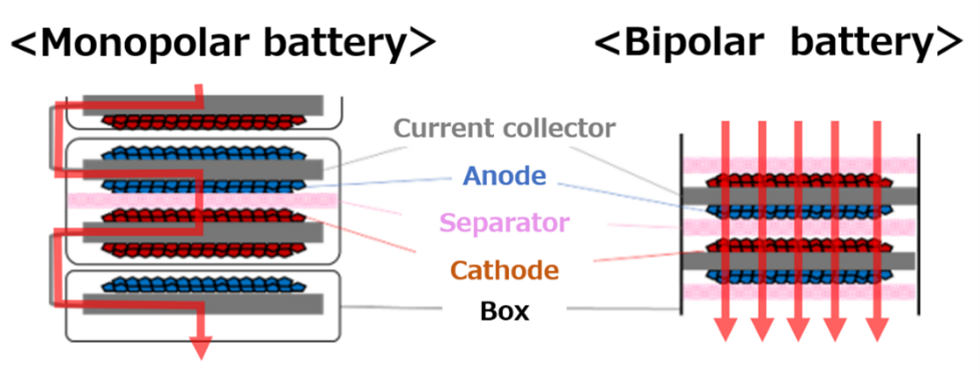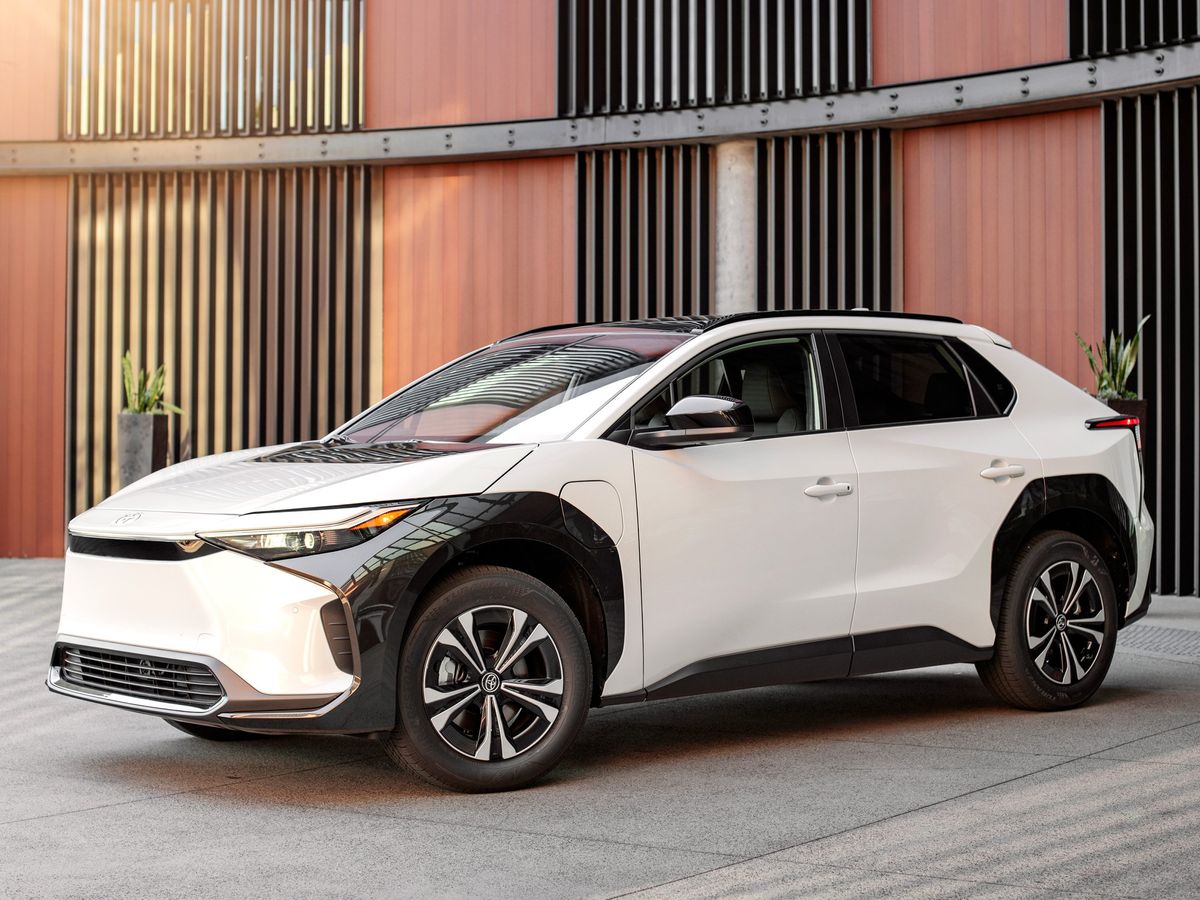Toyota, the world’s largest automaker, has released what it calls a “roadmap” of its advanced battery future for electric vehicles. Whether Toyota will faithfully follow that map or take a detour to its favored hybrid or fuel-cell tech remains an open question.
The one-time darling of environmentalists, Toyota has lately faced sharp criticism for fence-straddling or even outright opposition to EVs, including lobbying against stricter emissions rules or other measures designed to spur global adoption. In Toyota’s defense, the automaker argues that hybrids and plug-in hybrids can still play an important role in C02 reduction and the transition to electrification, especially while the charging infrastructure for EVs is in its infancy. Along with BMW, Toyota insists that many global markets and customers it serves—including in developing nations—will take much longer to adopt pricey EV tech. What’s more, supplies of lithium and other materials may remain too scarce and expensive to support a full and immediate EV changeover.
The automaker’s reliably mixed messages were underscored in Brussels at an event at the “BEV Factory Toyota Motor Corporation,” which isn’t actually a car or battery factory. Instead, the “factory” houses a new organization dedicated to EV development and business. Here, Toyota outlined concrete plans for four types of next-generation batteries that aim to boost driving range and power while sharply reducing charging times and cost. Those include the company’s eagerly awaited solid-state technology, which Toyota now insists it can bring to production by 2027–2028.
Takero Kato, president of BEV Factory, said the company’s initial next-generation EVs will reach showrooms in 2026. Despite lagging Tesla and several legacy automakers—the Toyota brand currently offers just one EV in the United States, the slow-selling bZ4X—the company claims it can sell 3.5 million EVs around the world by 2030, with nearly half that tally coming from next-gen models and batteries. Kato said multiple battery technologies will be key to offering EVs that appeal to a wide range of customers.
“We will need various options for batteries, just like we have different variations of engines,” Kato said.
What’s the range for Toyota’s next-gen EV batteries?
Three of Toyota’s new batteries feature today’s familiar liquid electrolytes, in three categories: popularization, performance, and high performance.
The new lithium iron phosphate (LFP) “popularization” battery, expected in 2026–2027, is the biggest money saver. Toyota cites a huge 40 percent cost reduction versus the bZ4X’s current battery. That’s accompanied by an expected 20 percent range jump to at least 600 kilometers (373 miles), under the European Union’s ultragenerous testing protocols. This battery’s actual range might be closer to 470 km (292 miles) under the testing regime in the United States, which hews closer to real-world driving results. The company targets a DC fast-charging time of less than 30 minutes from 10 to 80 percent full.

Just as important, the popularization battery adopts a bipolar structure, following the Toyota Aqua hybrid that in 2022 became the world’s first car with a bipolar nickel-metal-hydride battery as a main source of propulsion energy. (Toyota doesn’t sell the new subcompact Aqua in the United States; a previous generation was sold here as the Prius C until 2019.) The bipolar design refers to a current collector that is shared by both a cathode and anode. For the Aqua, that allows removing separator components between cells, allowing a stack with more cells in a given space. The design also features lower resistance within the battery, enabling a larger current flow.
Next up, Toyota pitches a monopolar “performance” battery with a projected driving range beyond 800 km (or 497 miles) based on the European protocols. Again, U.S. regulators might peg this battery’s projected range at closer to 625 km (388 miles), though that would still represent a 10 percent gain over a Tesla Model 3 Long Range. The company figures a 20 percent cost reduction versus today’s batteries, an even-zippier fast charge in 20 minutes or less, and a showroom debut in 2026.
Farther out, in 2027–2028, Toyota targets a “high-performance” bipolar battery with a high-nickel cathode and a cruising range of at least 1,000 km (621 miles). A car so equipped would easily set a world record for range, topping the 836 km (520 miles) of the Lucid Air Grand Touring. That high-performance battery pack would shave 10 percent off today’s costs, and also deliver an 80 percent charge in about 20 minutes.
Toyota said these range targets go hand-in-hand with improvements in aerodynamics—always a critical element of electric range and performance—and reduced vehicle weight. Here, the automaker is putting special focus on CdA (coefficient of drag multiplied by “A” for “frontal area”), because of the multiplication effect of frontal area on aerodynamic drag. A key design element is reducing battery height, with an attendant decrease in vehicle roofline height wherever possible. Where the bZ4X battery is 150 millimeters tall, including its casing, Toyota plans to reduce its next-generation battery height to 120 mm. Those packs could become as small as 100 mm for high-performance sports models where a low seating position and rakish roofline come with the territory.
Toyota’s big bet on solid-state batteries
Like many hopeful startups, Toyota continues to tease the next big leap: The arrival of solid-state batteries in showrooms. This time, Toyota claims it can deliver solid state to market by 2027–2028, delivering on the promise of robust range, safe and stable performance, and lightning-fast charging. Toyota again targets a 1,000-km range, but with an 80 percent DC charge in 10 minutes or less. If Toyota can somehow pull that off—and deliver affordable EVs to showrooms in serious numbers, to compete with Tesla and the rest—they’ll have achieved the kind of stamina and gas-station-rivaling refill times that could convince wary consumers to give EVs a shot.
“The trade-off, until now, has been an expected shorter battery life. However, recent technological advancements by Toyota have overcome this challenge and the company has switched its focus to putting solid-state batteries into mass production,” Toyota said.- Ion Storage Systems Says Its Ceramic Electrolyte Could Be a Gamechanger for Solid-State Batteries ›
- Behind the Wheel, Under the Hood of World’s First 500-Mile EV ›
- Toyota’s Skunkworks Chief “Incredibly Optimistic” on Climate ›
- Solid-State EV Batteries Now Face “Production Hell” - IEEE Spectrum ›
Lawrence Ulrich is an award-winning auto writer and former chief auto critic at The New York Times and The Detroit Free Press.



